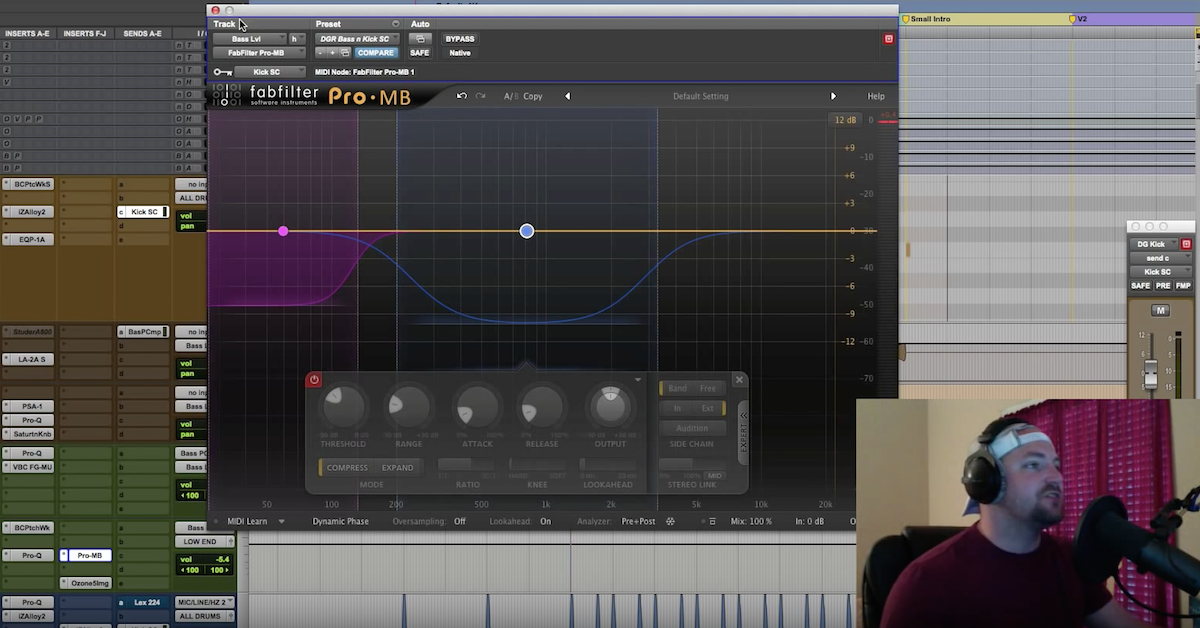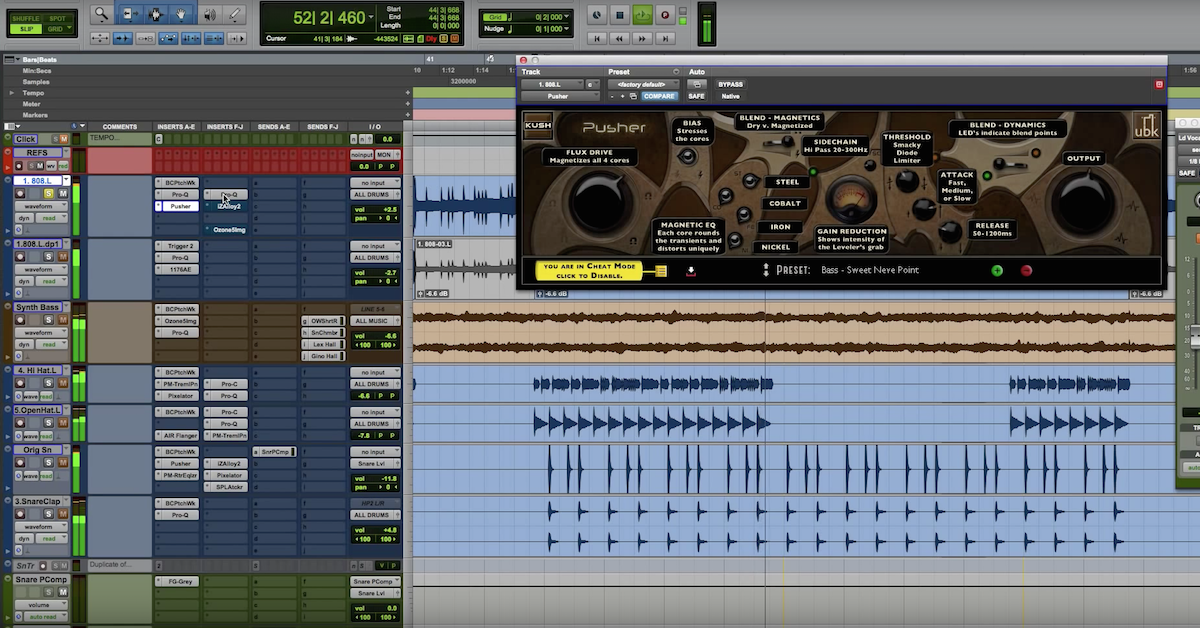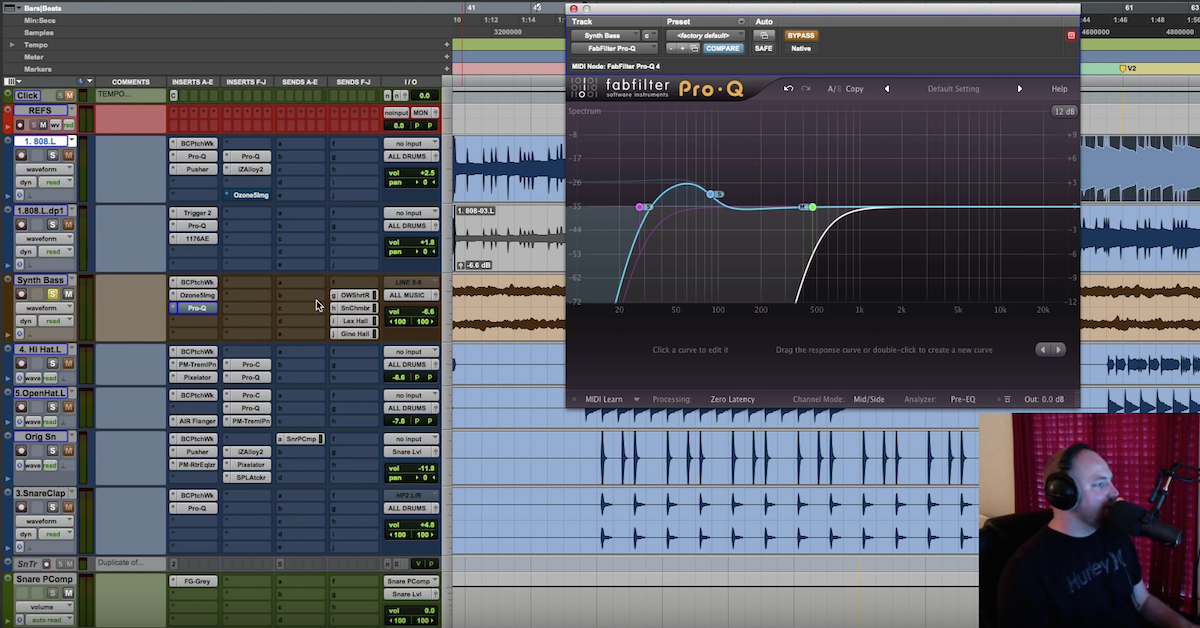How to Mix 808s
Article Content
This article has pretty much been due for a while. Making 808s really hit hard can be a little tricky. But I’m going to break it down along with some audio examples.
Sine Waves
First, an 808 kick is a catch-all for sine wave based kicks. Many “808s” are not actually from a Roland TR-808 at all. “808s and Heartbreaks,” for example, primarily relied on 909s.
You can make a decent, or even exceptional 808 from any synth that has an isolated sine wave oscillator. So don’t feel you have to be limited to an 808 to get a great “808” kick source sound.
And the source sound really is key. Nothing beats an 808 that just fits the record.
About 50% of the time, when I’m doing a record with an 808 kick line — which is pretty often — I just turn it up! I set it in the mix where I like it, and that’s the start and end of it.
Arrangement
Of course, to have an 808 that just fits in the record, you need an arrangement that makes sense for it.
Let’s say you want a clean, subby 808 that stands out. Like the song “Twisted” by Gorilla Zoe. That’s a lot of clean 60 Hz. You’ll notice the record is very sparse. Keeping the bass and midrange fairly open will allow the 808 to stand out.
But not every record warrants a sparse arrangement.
Let’s look at “John” by Lil Wayne and Rick Ross. In this record, you’ll notice the 808 has a lot of “tone” to it, and there is a punchy kick dubbed in with it. The 808 really isn’t that subby. Having this extra octave and dubbed punchy kick helps the 808 cut through the mix.
And one of my favorite 808 sounds still has to be “6 foot 7” by Lil Wayne.
In this record, the 808 is distorted and given a sparse arrangement, allowing it to fill out a large part of the frequency spectrum. The distortion is really well done, giving the 808 a very exciting character.
Processing Techniques
Now, for the techniques. I’ve included an audio sample of all 808s played in succession.
The common theme here is “overtones.” In almost every example I’m generating some kind of harmonic content that let’s the 808 feel more present without actually increasing the volume of the 808 itself. A
ll examples are level-matched, meaning they have the same amplitude, even if they appear to be louder or quieter.
1. Original 808
Choosing a good 808 to begin with is key. This 808 is an actual TR-808 kick resampled through an MPC. The output is run just a touch hot (not red though), which gives it just a bit of grit while retaining the sense of dimension. This is a really good, clean, 808 sound.
2. Saturation
Saturation is just a friendly name for subtle distortion. On this I’m using a plugin called Decapitator. I’m using just a hint of it, and I’m also using the “thump” setting on the high-pass filter. What that means is that I’m using a high-pass filter, and wherever I set the frequency gets a big boost.
What’s happening is the sum of many things: the saturation effect is adding subtle compression and overtones, while choking off some of the higher overtones, and the filter is boosting the sub, but also shortening the decay tail. It’s a lot. And remarkably, doesn’t sound all that different from the original. You lose a little of the “bounce” and “fullness,” but you gain a little more “punch” and “forwardness.” Only context can tell you what’s better.
3. Bit-Crushing
Bit-crushing is yet another form of distortion. It’s unique in that it comes from digitally reducing the resolution of a sound. The classic SP-12 sound partially comes from the fact that it’s a 12-bit sampler. !llmind’s drums are often bit crushed to give them that extra gruff tone. This particular example is crushed and then low-pass filtered to get rid of some of the high end digital distortion that stems from it.
4. Distortion
In this example I’m running the 808 into the tube amp in my compressor (not doing any compression) and turning the gain up all the way. This analog clipping creates some really crazy sounding overtones. I’m then using an EQ to boost those overtones, and a compressor to reshape the attack to have a similar attack as the original.
You’ll notice this 808 appears a lot louder than the others. That’s because our ear hears distortion and midrange tones as being louder than low end. There’s also a little more sustain in the overall signal. If I was mixing someone else’s record, this is probably too extreme of a process — I’d certainly be speaking with the producer if I wanted to take the 808 in this direction. If you are using hardware, a really good way to get this effect is to run out of the line output of your sampler/drum machine into the DI of a preamp and overdrive the gain. From there, a fader on a console or inline pad can reduce the level before hitting the digital to analog converters.
5. Saturation and Multiband Compression
Here I’m using Slate Virtual Tape Machine saturation plugin to generate those overtones. Then I’m using multiband compression to extend the decay of the overtones. Starting to see a theme here? This is an approach I use pretty frequently when I want to put a little hair on an 808 and make it pop on smaller speakers.
6. Layer another kick
Have your cake and eat it to. This is a basic 909 punch kick dubbed on top of the 808. I’ve faded the attack of the 808 so that as the 909 is decaying out the 808 is coming in. The benefit here is that the 909 has a lot more energy in that primary bass range (90-200 Hz). Our ear and most playback systems will hear this better than sub range. You can also manually beef up the sustain of the 808 to get a big punch with a fat tail.
7. Enhancers
This has two instances of Maxxbass, which is a Waves plugin. Maxxbass is a bass enhancer. It generates overtones that make the fundamental tone appear louder. There are a number of programs that do this. What I’m doing here is enhancing the sub, which gives me a little more clean overtone, and then enhancing the 120 Hz area after that. Essentially I’m enhancing those overtones with more overtones.





